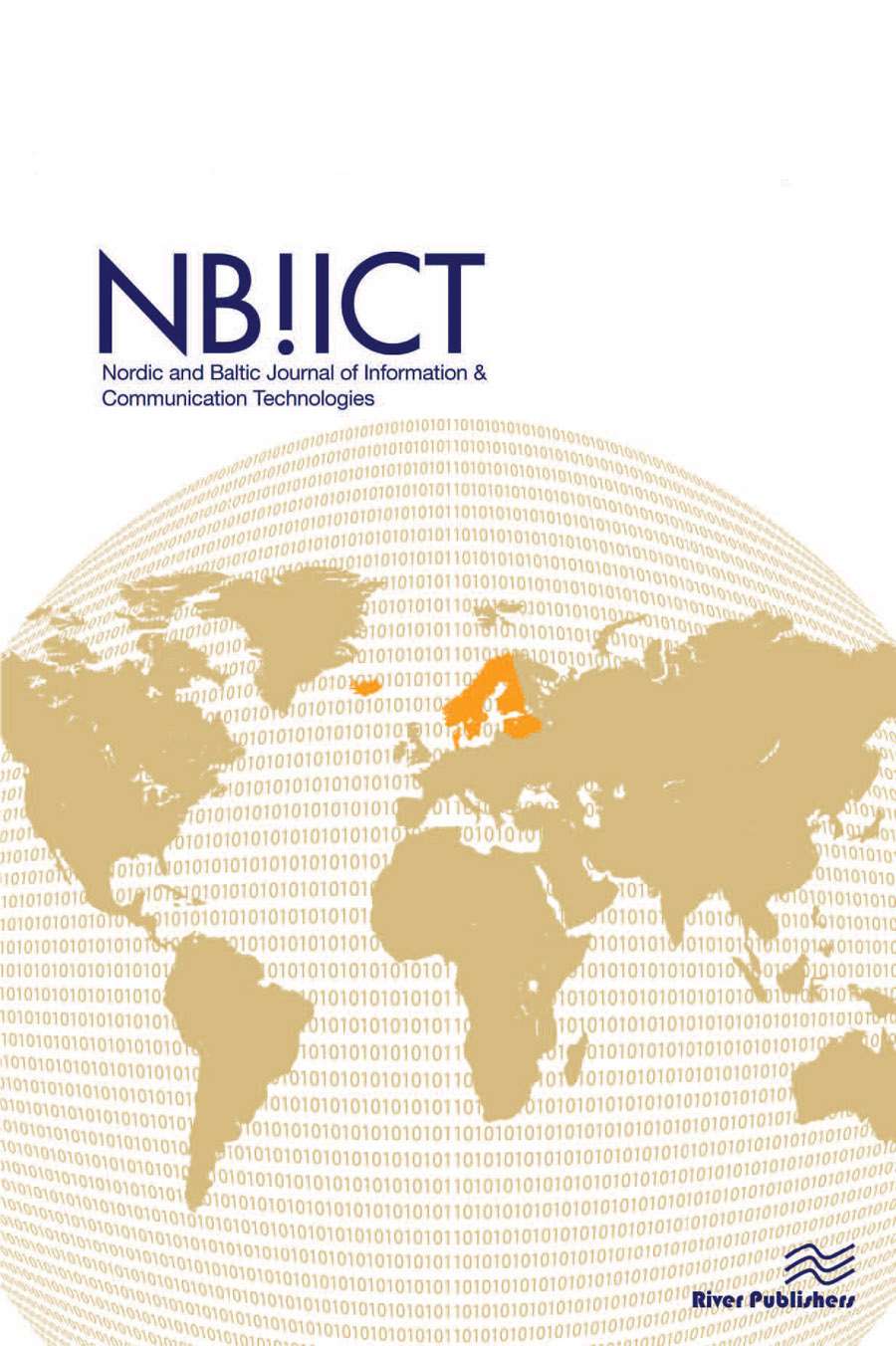User Behavior Analysis Using IoT Data
DOI:
https://doi.org/10.13052/nbjict1902-097X.2020.011Keywords:
IoT, smart homes, machine learning, smart wireless communicationAbstract
While the number of connected objects in the world of Internet of Thing (IoT) is increasing, an efficient and intelligent solution to exploit the huge amount of generated data does not exist. Smart homes powered by IoT devises are able to automate and monitor the every day activities of home owners, and improve the life quality especially for elderly and disabled people. In this paper, we propose a machine learning based model in order to analyze the IoT data and to provide data-driven services. Hence, this will make it possible to extract meaningful information from data and make intelligent decisions in smart environments. Then, the proposed model is evaluated using collected data from IoT devices based on different communication protocols.
Downloads
References
Nokia, “LTE-M – Optimizing LTE for the Internet of Things,” Nokia white paper, May 2015.
A. Zanella, N. Bui, A. Castellani, L. Vangelista, and M. Zorzi, “Internet of things for smart cities,” IEEE Internet of Things Journal, vol. 1, no. 1, pp. 22–32, Feb 2014.
K. Agarwal, A. Agarwal, and G. Misra, “Review and performance analysis on wireless smart home and home automation using iot,” in 2019 Third International conference on I-SMAC (IoT in Social, Mobile, Analytics and Cloud) (I-SMAC), 2019, pp. 629–633.
S. M. R. Islam, D. Kwak, M. H. Kabir, M. Hossain, and K. Kwak, “The internet of things for health care: A comprehensive survey,” IEEE Access, vol. 3, pp. 678–708, 2015.
A. Vakaloudis and C. O’Leary, “A framework for rapid integration of IoT Systems with industrial environments,” in 2019 IEEE 5th World Forum on Internet of Things (WF-IoT), 2019, pp. 601–605.
V. R. Konduru and M. R. Bharamagoudra, “Challenges and solutions of interoperability on iot: How far have we come in resolving the iot interoperability issues,” in 2017 International Conference On Smart Technologies For Smart Nation (SmartTechCon), 2017, pp. 572–576.
T. Rahman and S. K. Chakraborty, “Provisioning technical interoperability within zigbee and ble in iot environment,” in 2018 2nd International Conference on Electronics, Materials Engineering Nano-Technology (IEMENTech), 2018, pp. 1–4.
A. Al-Fuqaha, M. Guizani, M. Mohammadi, M. Aledhari, and M. Ayyash, “Internet of things: A survey on enabling technologies, protocols, and applications,” vol. 17, no. 4, 2015, pp. 2347–2376.
T. Munasinghe, E. W. Patton, and O. Seneviratne, “Iot application development using mit app inventor to collect and analyze sensor data,” in 2019 IEEE International Conference on Big Data (Big Data), 2019, pp. 6157–6159.
A. M. Ghosh and K. Grolinger, “Deep learning: Edge-cloud data analytics for iot,” in 2019 IEEE Canadian Conference of Electrical and Computer Engineering (CCECE), 2019, pp. 1–7.
P. Mtshali and F. Khubisa, “A smart home appliance control system for physically disabled people,” in 2019 Conference on Information Communications Technology and Society (ICTAS), 2019, pp. 1–5.
D. Bothun and M. Lieberman, “Smart home, seamless life unlocking a culture of conveniences,” in Consumer Intelligence Series.
D. J. Cook, A. S. Crandall, B. L. Thomas, and N. C. Krishnan, “Casas: A smart home in a box,” Computer, vol. 46, no. 7, pp. 62–69, July 2013.
B. D. Minor, J. R. Doppa, and D. J. Cook, “Learning activity predictors from sensor data: Algorithms, evaluation, and applications,” IEEE Transactions on Knowledge and Data Engineering, vol. 29, no. 12, pp. 2744–2757, Dec 2017.
S. K. Das, D. J. Cook, A. Battacharya, E. O. Heierman, and Tze-Yun Lin, “The role of prediction algorithms in the mavhome smart home architecture,” vol. 9, no. 6, 2002, pp. 77–84.
D. J. Cook, N. C. Krishnan, and P. Rashidi, “Activity discovery and activity recognition: A new partnership,” vol. 43, no. 3, 2013, pp. 820–828.
H. Alemdar, H. Ertan, O. D. Incel, and C. Ersoy, “Aras human activity datasets in multiple homes with multiple residents,” in 2013 7th International Conference on Pervasive Computing Technologies for Healthcare and Workshops, 2013, pp. 232–235.
“Raspberry pi foundation,” https://www.raspberrypi.org/, accessed: 2020-04-30.
G. pages, “Zigbee2mqtt documentation,” url: https://www.zigbee2mqtt.io/, 2019.
F. Pedregosa, G. Varoquaux, A. Gramfort, V. Michel, B. Thirion, O. Grisel, M. Blondel, P. Prettenhofer, R. Weiss, V. Dubourg, J. Vanderplas, A. Passos, D. Cournapeau, M. Brucher, M. Perrot, and Édouard Duchesnay, “Scikit-learn: Machine learning in python,” vol. 12, no. 85, 2011, pp. 2825–2830. [Online]. Available: http://jmlr.org/papers/v12/pedregosa11a.html


